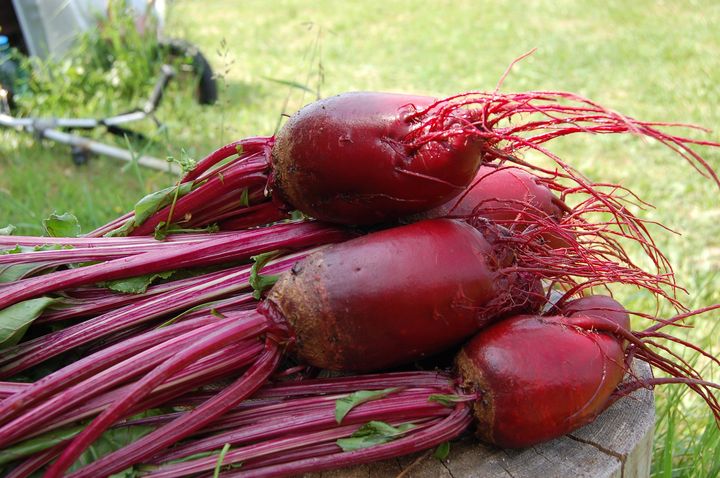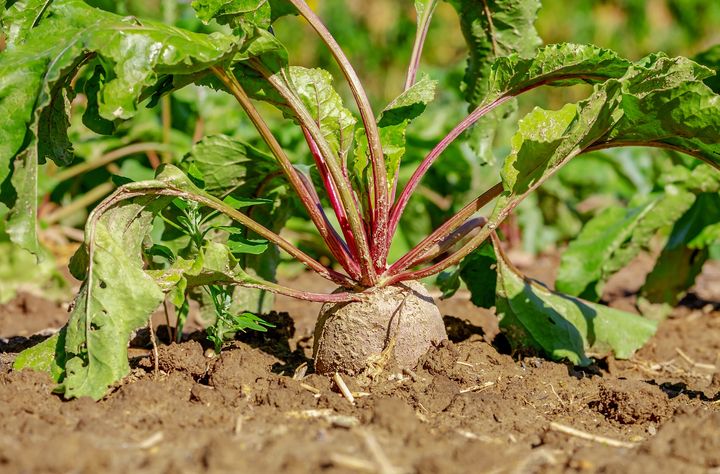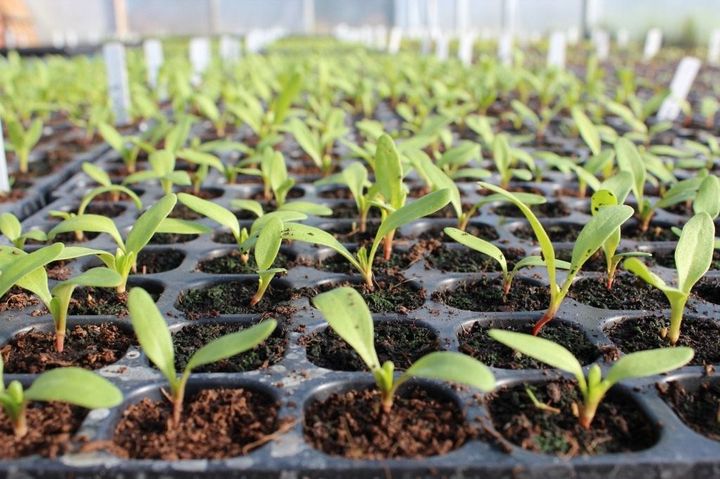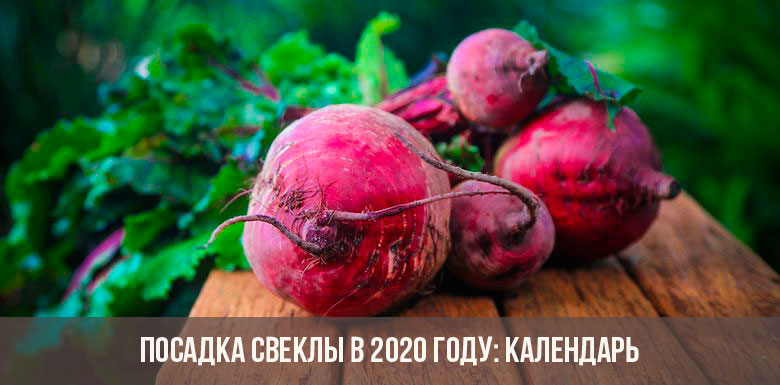Content
Gardeners and gardeners in Russia are already preparing for planting beets in 2020, are studying the lunar calendar and a list of favorable days to start sowing, and are purchasing quality seeds. This useful root crop has great nutritional value and gives a plentiful harvest with proper care. It is planted not only in spring, but also in the winter. The latter method of cultivation, as a rule, raises many questions.
Growing beets in late autumn
Autumn beet planting is the best option for those regions where, according to the weather forecast in 2020, there will be a short summer. Sowing material during the cold months naturally hardens, becomes resistant to spring frosts, lack of watering, diseases and pests. During the wintering period, seeds with a fairly dense cover gradually swell and germinate much more actively in the spring, already in March-early April they dig up the first succulent root crops. Agronomists recommend choosing the following beet varieties for autumn work that are resistant to frost and not prone to overgrowth:
- Podzimnaya-474;
- Cold-resistant-19;
- Gaspadynia;
- Detroit;
- Red ball;
- Polar flat K-249.

Cold-resistant beets sown in autumn have excellent taste, but they cannot be stored for a long time after digging. She is immediately allowed to roll. It is advisable to cultivate the crop after onions, cucumbers, legumes, potatoes, tomatoes.
When to plant beets in the winter
To start planting beets and other root crops in 2020, choose favorable days in the sowing calendar, when the moon is waning:
| Month | Auspicious days | Neutral days | Sowing is undesirable |
|---|---|---|---|
| October | 15-20, 22-27 | 5, 14, 21, 28 | 1-4, 6-13, 29-31 |
| November | 13-19, 21-25 | 4, 12, 20, 26 | 1-3, 5-11, 27-30 |
So that in the spring, beet seedlings grow actively, all residual roots of other plants, large stones and weeds are removed from the ground. During the digging of the soil, it is fertilized with ash and organic humus or phosphorus-potassium mixtures. Planting a vegetable is better in a well-lit area. Intense ultraviolet rays make the root crop larger, brighter and more juicy. It is not recommended to choose a bed with clay and excessively acidic soil. Beet seedlings love neutral, well-loosened soil. To reduce acidity, it is loosened with lime, chalk, dolomite flour, wood ash.
For several days, beet seeds are germinated on a windowsill in a damp cloth. For a day they are soaked in superphosphate solution. Then they are planted in dry soil, having prepared furrows 3-4 cm deep. It is important to maintain a distance between seedlings - 8-10 cm and between furrows - 15-20 cm. They are covered with loose garden soil mixed with compost and sand, and well watered at the end.
The air temperature on the street should not be lower than 0 degrees (day and night). You can’t rush either, since in the early autumn there are often thaws during which the beets begin to sprout actively, and then die from sudden frosts. To protect plantings from frost for the entire cold season, the bed is covered with polyethylene or sprinkled with sawdust, needles, fallen leaves, loose snow. In the spring, such a shelter is removed and the upper layer of soil is loosened. To avoid crowding in the garden and to grow large rather than small root crops, less viable sprouts are torn out.

When to start growing in the spring
Red root seeds are most often planted in open ground after planting carrots on a waning moon:
| Month | Auspicious days | Neutral days | Sowing is undesirable |
|---|---|---|---|
| April | 1-4, 20-26, 28-30 | 5, 12, 19, 27 | 6-11, 13-18 |
| May | 1-4, 20-25, 27-31 | 5, 12, 19, 26 | 6-11, 13-18 |
In regions with adverse climatic conditions and a short summer, beet planting in 2020 is better to be postponed until the end of May, when it is already safe to plant seeds in the ground.
When digging the earth, organic matter and mineral fertilizers are introduced into it. Seeds are pre-soaked in a superphosphate solution and then germinated for several days in wet gauze. Depressions are made in the beds 4-5 cm deep. Between them there should be a distance of 15-20 cm, and between seedlings - 5-7 cm, although after the appearance of the first sprouts, most likely, additional thinning will be required. Occasionally, beds are loosened and watered as the top layer of soil dries.
Root planting seedlings
In order not to thin out the beet bushes in the spring, the root crops are germinated previously in separate tablets or cups, and also, if possible, in a greenhouse. Some gardeners take boxes, flowerpots or boxes of earth and make small grooves in them. Seeds are laid out at a distance of 3-4 cm from each other.

Work begins a month before the planned transfer of seedlings to the open ground, that is, in March - early April. Pots with sprouts are first covered with a film, and then it is periodically removed. In a greenhouse or greenhouse, daily ventilation is carried out. Before planting sprouted seedlings, it is abundantly watered, the roots are lowered into a clay solution and instilled in a prepared bed. At this point, each bush should already have 3-4 large leaves.
Proper root care
If there is not enough space in the garden, agronomists recommend planting beets on the edge of the beds with carrots or onions. During the season, it is advisable to carry out 2 top dressing of the soil - potassium, nitrogen and phosphorus or compost in combination with humus and ash. To increase the sweetness of the root crop, several times during the summer its tops are poured with salt water (1 cup of table salt per 10 liter bucket). A month before the planned digging of beets, they stop watering the crop. During the active formation of root crops, they require frequent moistening of the soil.
A serious threat to the vegetable crop is weeds. It has a fairly long growing season, so young beet sprouts sometimes die quickly due to the proximity to other plants with a powerful root system. To remove weeds, they are not just pulled out of the ground by hand, but watered the entire garden with sodium nitrate. In time, it is necessary to carry out loosening of the soil to a depth of 4-6 cm in order to prevent the formation of a dense earth crust.
Experienced gardeners know that it is important to monitor the thinning of the root crop. The procedure is carried out twice a season. As a result, between the shoots should remain free space of 8-9 cm. It is best to pull out the extra bushes after heavy rain or recent watering. Their root system, as well as their neighbors, is minimally damaged, and it will be possible to dig up the torn beet seedlings in an empty place.
Secrets to improve the taste and keeping quality of beets: video
Read also:




















